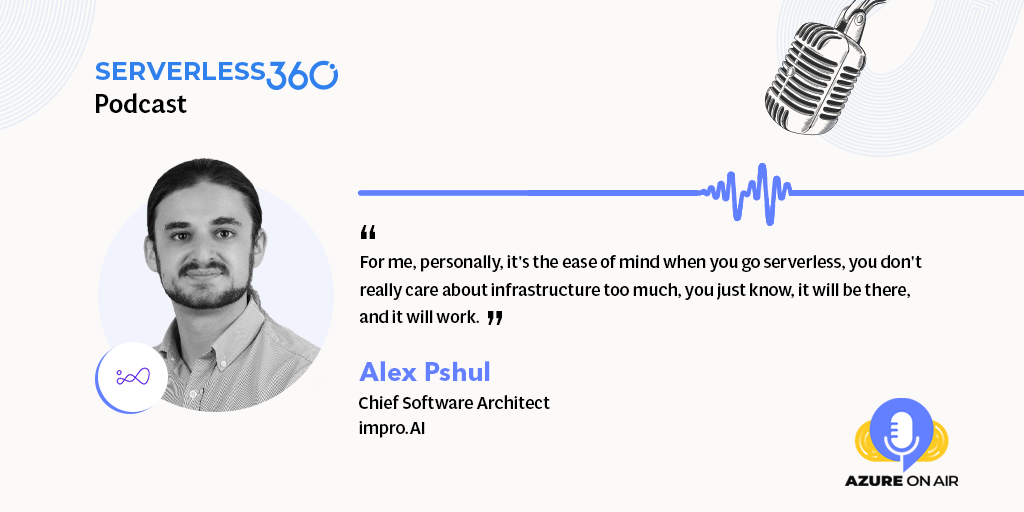Serverless Microservices on Azure: A Cloud Expert’s Perspective
Serverless computing represents a major evolution in cloud application development. In this post, we’ll explore Alex Pshul’s – Microsoft MVP, perspectives on leveraging serverless microservices in Azure.
What is Serverless Computing?
The core idea behind serverless is that developers don’t have to provision or manage backend infrastructure. Instead, they simply write and deploy code, and the cloud provider runs it by dynamically allocating resources as needed. With serverless, you only pay for what you use. The platform automatically scales based on traffic. This elasticity is a huge benefit over always-on resources.
Why Serverless Microservices?
The main appeals of serverless microservices are:
- Reduced complexity
- Cost savings
- Faster innovation
Azure’s Serverless Platform
The core serverless service on Azure is Azure Functions. Functions let you run code snippets that get triggered by events like HTTP requests. Azure provides many other managed, auto-scaling services like Event Hubs and Logic Apps that complement Functions. Together, these enable full-fledged serverless applications.
Tips for Serverless Microservices on Azure
For those getting started with serverless microservices on Azure, below are the few tips recommended:
- Decompose legacy apps into microservices so portions can be made serverless
- Use native Azure services like Event Hubs and Logic Apps to integrate microservices
- Leverage Durable Functions if you need state management between microservices
- Unless there’s a specific requirement, many users might find serverless solutions easier and more cost-effective than container management systems like Kubernetes.
The Serverless Future
Serverless microservices represent the next evolution in cloud architecture. Azure provides a robust platform to develop and run modern serverless workloads. By starting small and incrementally adopting serverless, teams can realize benefits like increased agility, reduced costs, and accelerated innovation.


